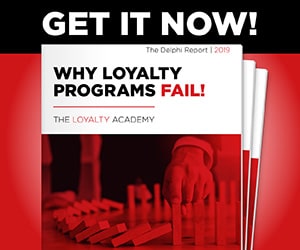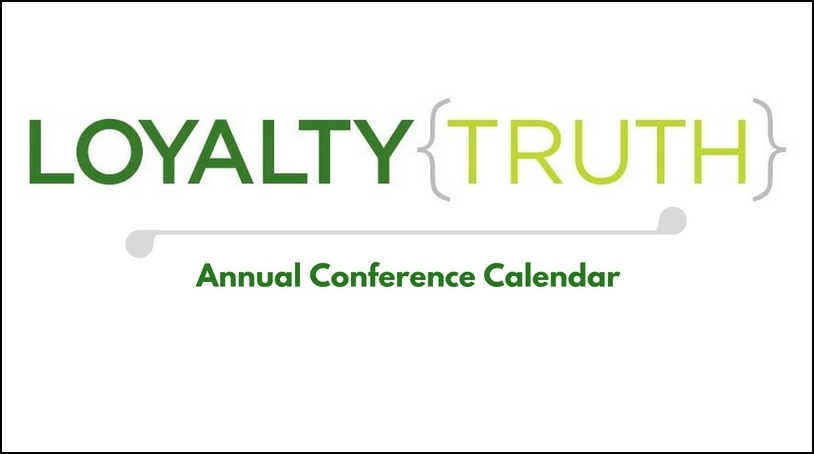Loyalty Marketing has had its most notable successes in high frequency transaction environments. Think airlines, credit cards, gaming, hotels, and retail.
Where the sales cycles are extended or the opportunity for transactions less frequent, there have been fewer examples of success. Think insurance, subscription businesses like newspapers, cable, and wireless, and health care.
A revelation of Loyalty 201 is that data driven marketing will work in virtually any business model. Could it be that it was the self-limiting definitions of early Loyalty pioneers that created a self fulfilling prophecy that Loyalty only works in well defined settings and circumstances? To quote my Customer Strategy Network co-founder, Mike Atkin …. “Ballocks!”
To break free from these Loyalty cobwebs, the use of Customer Strategy as an umbrella term makes ever more sense to describe what this business is about. “Loyalty” whispers limitation, while “Customer Strategy” shouts innovation.
Today’s inspiring innovator is Safeway. The company has used incentives to reduce health care costs and its CEO, Steve Burd has become the leading visionary for health care reform from corporate America, having made nine or so trips to Capitol Hill just in 2009 to tell his story. His rallying cry goes like this: “At Safeway we believe that well-designed health-care reform, utilizing market-based solutions, can ultimately reduce our nation’s health-care bill by 40%.”
The Safeway Healthy Measures program is voluntary and currently covers 74% of the insured nonunion work force. It gives employees a financial stake in the system and encourages healthy behaviors to achieve incentives.
As is common practice with many employers, Safeway requires employees to pay a portion of their own health care through premiums, co-pays and deductibles. Beyond that, the plan takes advantage of a provision in the 1996 Health Insurance Portability and Accountability Act (HIPAA), allowing it to differentiate premiums based on behaviors such as tobacco usage, healthy weight, blood pressure and cholesterol levels.
Ken Shachmut, Senior VP Strategic Initiatives, Health Initiatives, and Health Re-engineering at Safeway crafted Healthy Measures on the premise “that if people were given responsibility for their decisions, and there was transparency to the financial consequences to those decision, that they would choose to maximize both their health and their financial benefit.”
Safeway found motivation for its plan in the following health factoids which gave rise to the notion that encouraging behavior change could lead to healthier associates and big cost savings :
- 70% of all health-care costs are the direct result of behavior
- 74% of all costs are confined to four chronic conditions (cardiovascular disease, cancer, diabetes and obesity)
- 80% of cardiovascular disease and diabetes is preventable
- 60% of cancers are preventable
- More than 90% of obesity is preventable
The program is working by several measures:
- 78% of participants rate the plan as “good, very good or excellent”
- 76% of those surveyed asked for more financial incentives to reward healthy behaviors
While business struggles with soaring health care costs and the nation debates adoption of a nationalized health plan, Mr. Burd projects that if the US had adopted its approach in 2005, “the direct health care bill would be $550 billion less than it is today, almost 4 times the $150 billion that most experts estimate to be the cost of covering today’s 47 million uninsured”.
And what is the key incentive proven to be effective to help influence the positive behavior changes by the insured population? Mr. Shachmut explains it this way “we all know that just telling people to do the right thing is not effective … cash truly has been king in our program in the form of differential premiums. Our average difference under Healthy Measures is about $800 per year – for the employee and spouse, so almost $1,600 for a family.”
A measure of soft benefits are included, using “mutually-reinforcing programs available to all employees and spouses – access to the Fitness Center, discounted gym memberships, care management programs, health and wellness programs, information seminars to employees, and other related items.”
The success of Healthy Measures should be highly encouraging to US businesses and the citizenry at large. There is a path to managing our health care needs as a nation on a better basis. The program also lends insight into how the core elements of Loyalty 201 can be applied in the health care industry, breaking away some of the old cobwebs.
I feel better already!
 Previous Article
Previous Article



